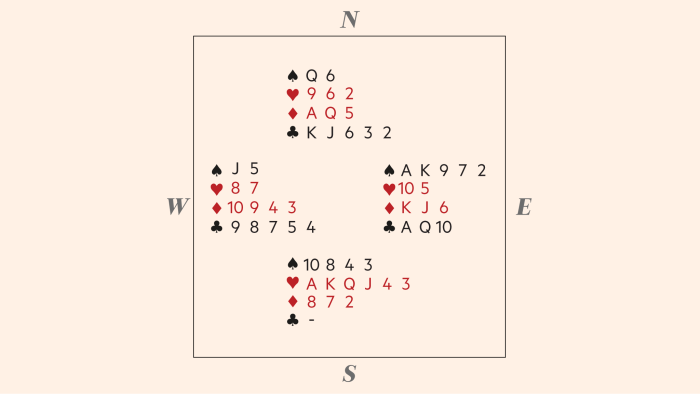Contract bridge: Eschewing affordable over-ruff simplifies complex timing issues

Roula Khalaf, Editor of the FT, selects her favourite stories in this weekly newsletter.
A loser-on-loser play involves the discard of a loser opposed to the risk of an overruff or trump-promotion. Despite — or perhaps because of — the presence of festive sherry, the declarer found a variation of this play which simplified everything subsequently.
Bidding
Dealer: East
E/W game
Despite holding a useless-seeming Q♠, North raised her partner to game. West led J♠. Declarer concluded that with East having opened, the diamond finesse would fail, leaving two spades and two diamonds to lose. However, dummy’s Q♠ did, in fact, make a contribution . . .
Declarer covered the lead with Q♠, East won K♠, cashed A♠ and led 9♠. South covered, West ruffed; declarer reached for dummy’s 9♥. Suddenly, a light illuminated, and instead she discarded 5♦ — converting the trick into a loser-on-loser play. Had she over-ruffed, it is complex to time the order of play, and the declarer might well have failed.
West switched promptly to 10♦ but, now, with trumps splitting evenly, declarer is in control. She rose with A♦, drew one round of trumps to hand and laid down 8♠, on which she pitched dummy’s Q♦. Now, she could trump two diamonds in dummy, ruffing clubs to return to hand, before drawing East’s final trump. With perfect timing, the contract might still be made, but the loser-on-loser play ensured the two diamond ruffs and simplified the thinking for the festively challenged declarer.
Comments